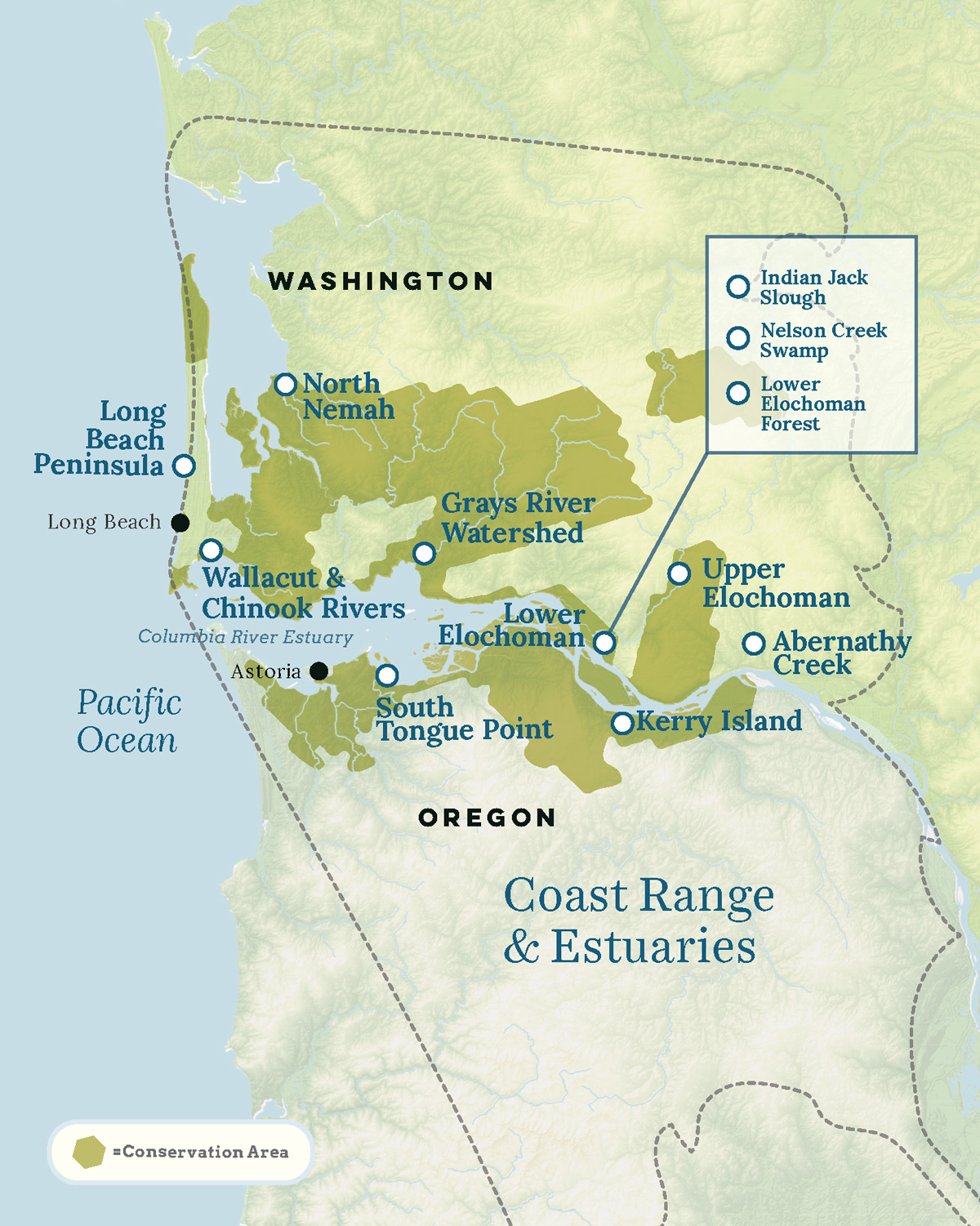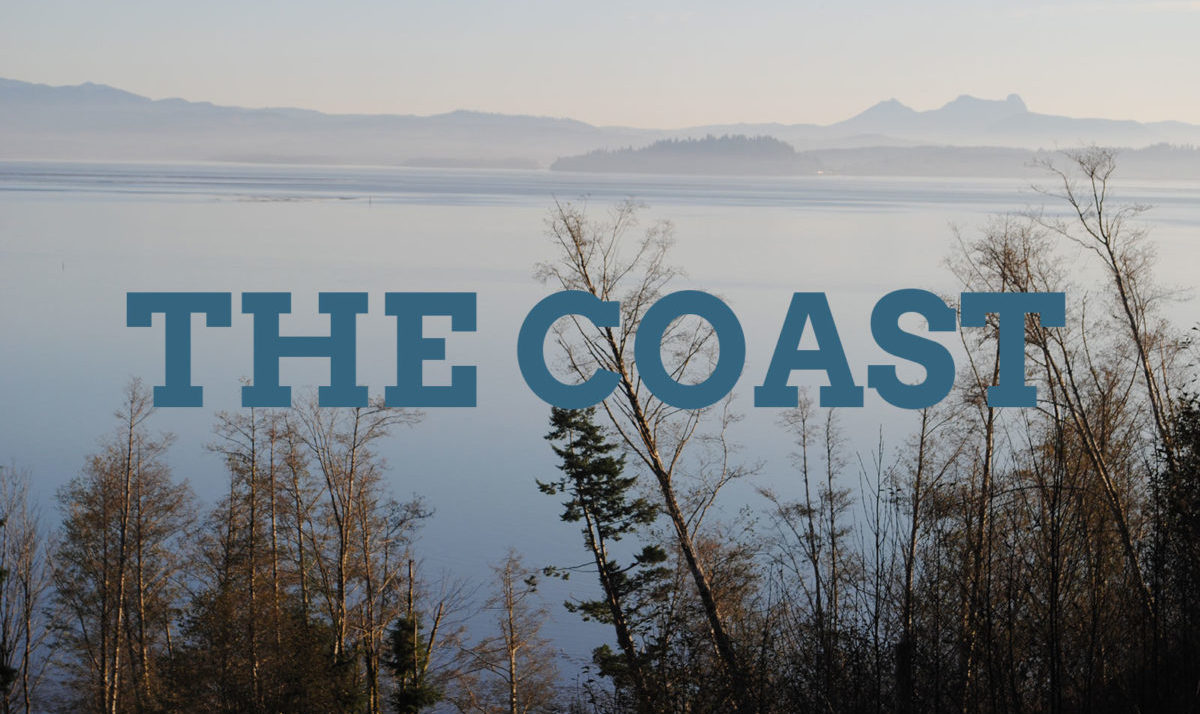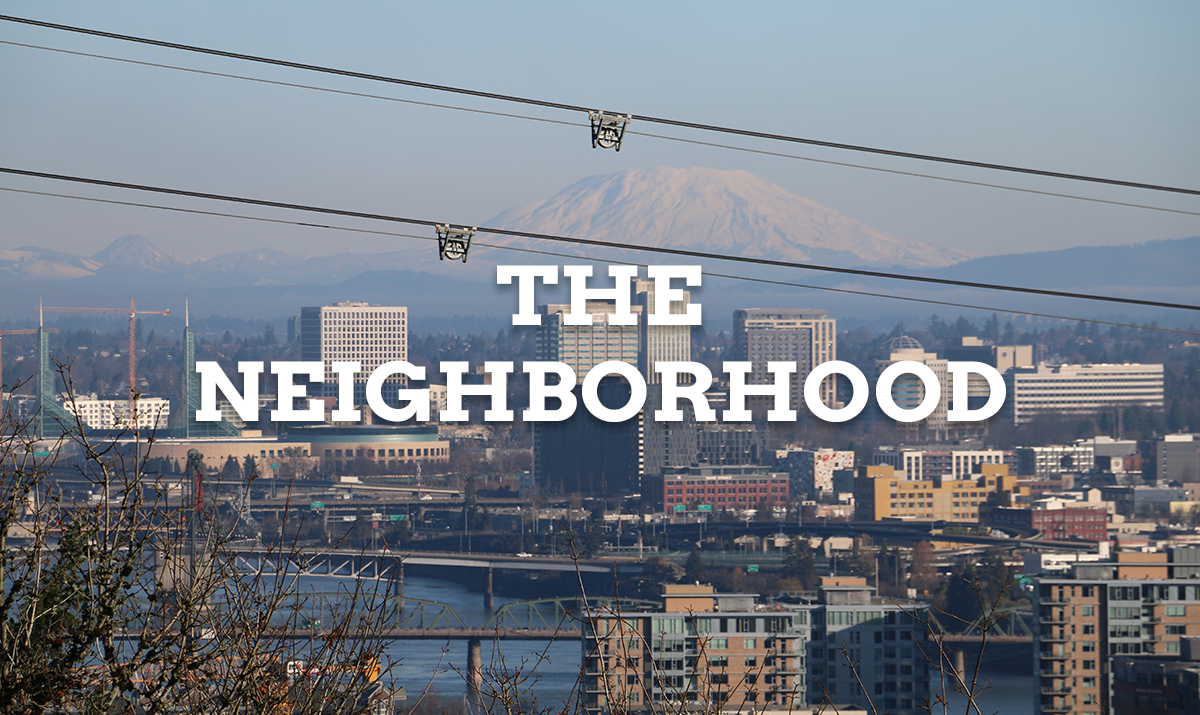Ecoregional Tour: The Coast
Join us for an immerisve look at our work in the Coast Range & Estuaries
 The mouth of the Columbia River and the surrounding land hold some of the most fascinating landscapes you’ll ever see! Rivers, estuaries, coastal dunes, and old-growth forests blend together to support wildlife along with local fishing, forestry, and recreation industries.
The mouth of the Columbia River and the surrounding land hold some of the most fascinating landscapes you’ll ever see! Rivers, estuaries, coastal dunes, and old-growth forests blend together to support wildlife along with local fishing, forestry, and recreation industries.
Virtual Tour
Take a virtual tour of The Coast today to learn how we are conserving and restoring the best remaining coastal, wetland, river, and forest habitats while partnering with communities to support balanced land management.
Live Event
Our live event took place on Tuesday, June 30, but you can view a recording of the live event at the link below!
Simply put, the marbled murrelet is a bird of the sea, a winged traveler that lives between ocean waters and lush rainforests of the Pacific. Audubon Society has referred to them as a “strange, mysterious little seabird,” a fitting descriptor of a creature that weathers life in old-growth forests on the rugged and wild Pacific Northwest coast.
View the recording of this engaging conversation to learn more about the endangered marbled murrelet, old-growth forest management, and Columbia Land Trust’s conservation efforts on the coast. You’ll hear from our coastal conservation team Lydia Mendoza and Austin Tomlinson, as well as Research Wildlife Biologist Kim Nelson and Portland Audubon’s Paul Engelmeyer, both experts on the elusive seabirds.
About our Ecoregional Virtual Tour Series
The summer months at Columbia Land Trust are usually filled with opportunities to get out on the land for tours, volunteer activities, and other events. Because communities are just starting to ease into our ‘new normal’ and because the safety of our supporters and staff is paramount, we are continuing to hold off on hosting any in-person public gatherings for now.
Instead, we want to take this opportunity to bring our Land Trust tours to you! This summer we will be rolling out a series of Virtual Ecoregion Tours highlighting our work throughout the five ecologically-distinct regions in our service area.

